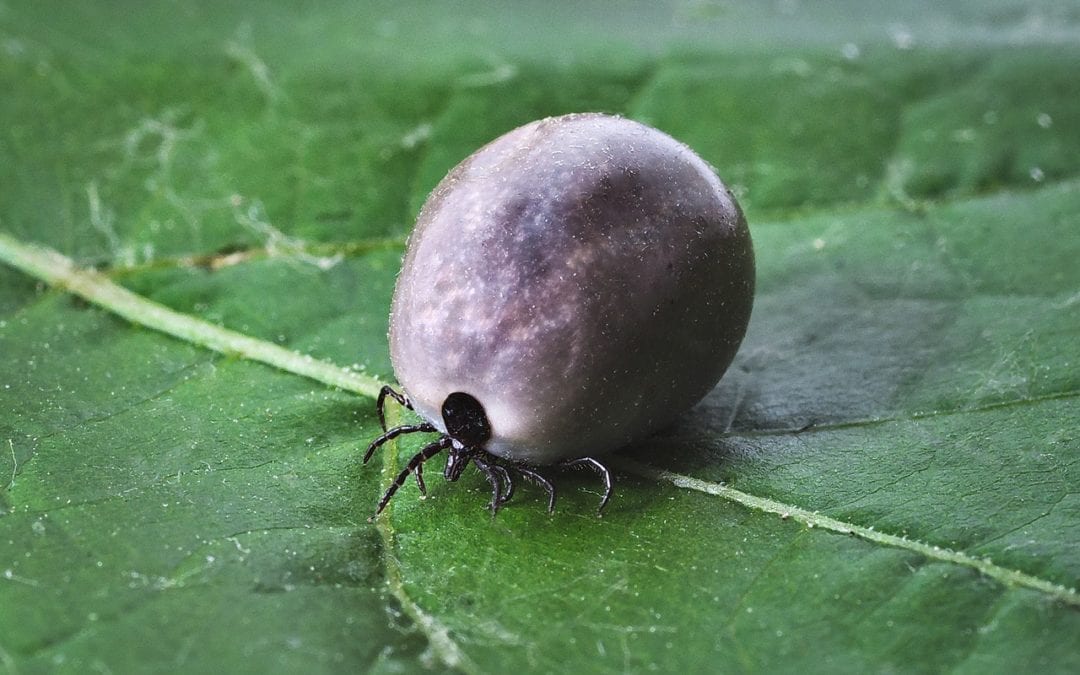Finding a tick lodged securely in your dog or cat’s skin is one of the less-than-pleasant aspects of pet ownership. Unfortunately, ticks and pets often go together like peanut butter and jelly as the weather warms. Because ticks can be carriers of disease, this is more than just an annoyance.
While the prevalence of ticks and tick-borne disease is highest on the west side of the state, the Union Lake Veterinary Hospital staff is already starting to see a lot of ticks this year. There are more ticks, and more ticks carrying some kind of disease contamination, than in previous years. Now is the time to be thinking about ticks and your pets, and what you can do to protect your family, including the four-legged members.
Ticks And Pets: A Risky Combination
Pets, especially dogs, make excellent hosts for many species of ticks. The most common tick-borne diseases transmitted to pets are:
Lyme Disease – Symptoms include stiffness, limping, inflamed joints, reduced appetite, depression, fever, and sensitivity to touch. In advanced cases, kidney failure may result.
Rocky Mountain Spotted Fever – This common illness can manifest in pets as depression, lethargy, reduced appetite, blood in the urine or stool, irregular heartbeat, swollen lymph nodes, fluid retention in the limbs.
Ehrlichiosis – Symptoms typically appear less than a month after the bite, and can include loss of appetite, lethargy, fever, stiffness, and bruising.
If you notice any of the above symptoms in your pet following a tick bite, give us a call right away.
Tick Removal
If you find a tick on your pet, you will need to remove it immediately. Follow these veterinarian-approved tips for safe tick removal:
Grasp the tick by the head as close to the skin as possible using fine-tipped tweezers or your fingernails covered with tissue. Pull straight out, never twist or jerk the tick.Don’t squeeze the tick, as it may inject pathogens into your pet or you.Don’t apply hot matches, petroleum jelly, rubbing alcohol, or any other substance to the tick as these methods will not aid in tick removal and may make the situation worse.Once the tick has been removed, wash the area thoroughly.Make sure to kill the tick by drowning it in alcohol. Burning the tick can release toxic fumes and other methods, including flushing it, won’t guarantee its demise.
Prevention Counts
While it’s not possible to completely protect your pets against tick bites, these methods will cut down on your pet’s exposure:
- Providing your pet with a monthly veterinarian-recommended flea and tick preventative medication is the number one way you can protect him or her against the devastating effects of tick-borne illness.
- If your pet is outdoors a lot or is more likely to encounter ticks, talk to your vet about vaccinating your pet against Lyme disease.
- Inspect your pet, and yourself, for ticks after being outdoors. Make sure to feel your pet all over, applying enough pressure to feel if a tick is present. If your pet has a thick coat or undercoat, you may want to consider a Spring trim. You’ll also want to press a bit more firmly on the skin during a tick check in order to feel any unwanted pests.
- Ticks live in moist, cool areas while they are searching for food. Keep them away from your home by trimming tall grasses and shrubbery around your home and pruning tree branches to let more sunlight into darker areas.
If you have other tick-related questions or concerns, don’t hesitate to speak to your vet or your Union Lake Pet Services groomer.

